INDUSTRIAL &
TERMINAL RAILROADS &
RAIL-MARINE OPERATIONS
OF BROOKLYN, QUEENS, STATEN
ISLAND, BRONX &
MANHATTAN:
Port Morris Casanova Willis Avenue
| HARLEM RIVER YARD Mott Haven |
HELL GATE YARD Stony Point |
OAK POINT YARD Port Morris |
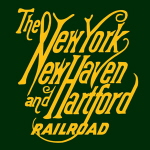
.
|
updated: |
||
|
|
||
|
update summary: |
date: | |
| marine rosters added | 5/13/2024 | |
| locomotive & location data & photos added | 5/4/2024 | |
| page created |
4/30/2024 | |
.

| Table Of Contents . . |
|||
| Overview | Harlem River Station | Hell Gate Yard | Oak Point (Casanova) |
| . | |||
| Locomotives | Marine Roster | ||

| Break Bulk / Less Than Carload, Freight Storage & Handling: | Harlem River Station |
| Car Load / Team Tracks: | Hell Gate Yard |
| Carfloating: | Oak Point Yard |
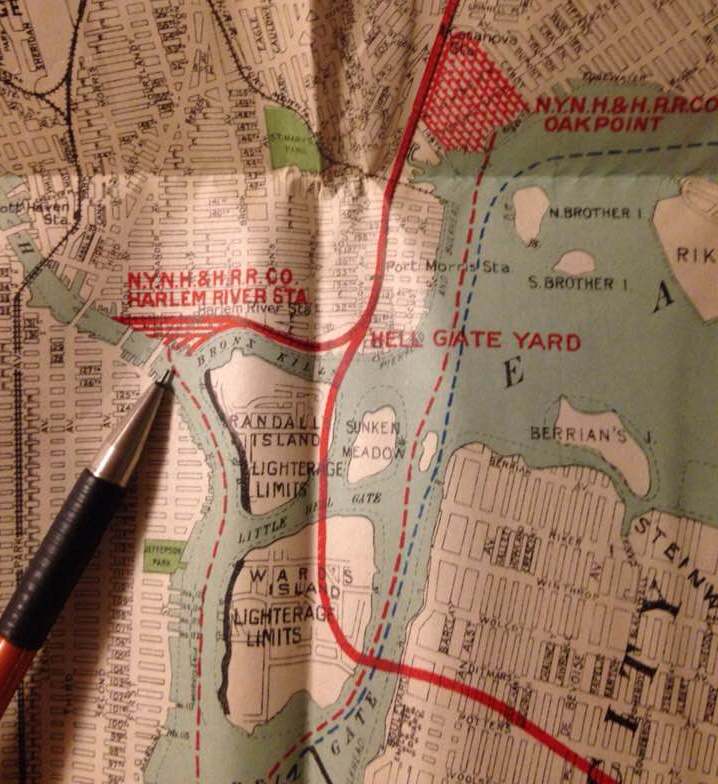
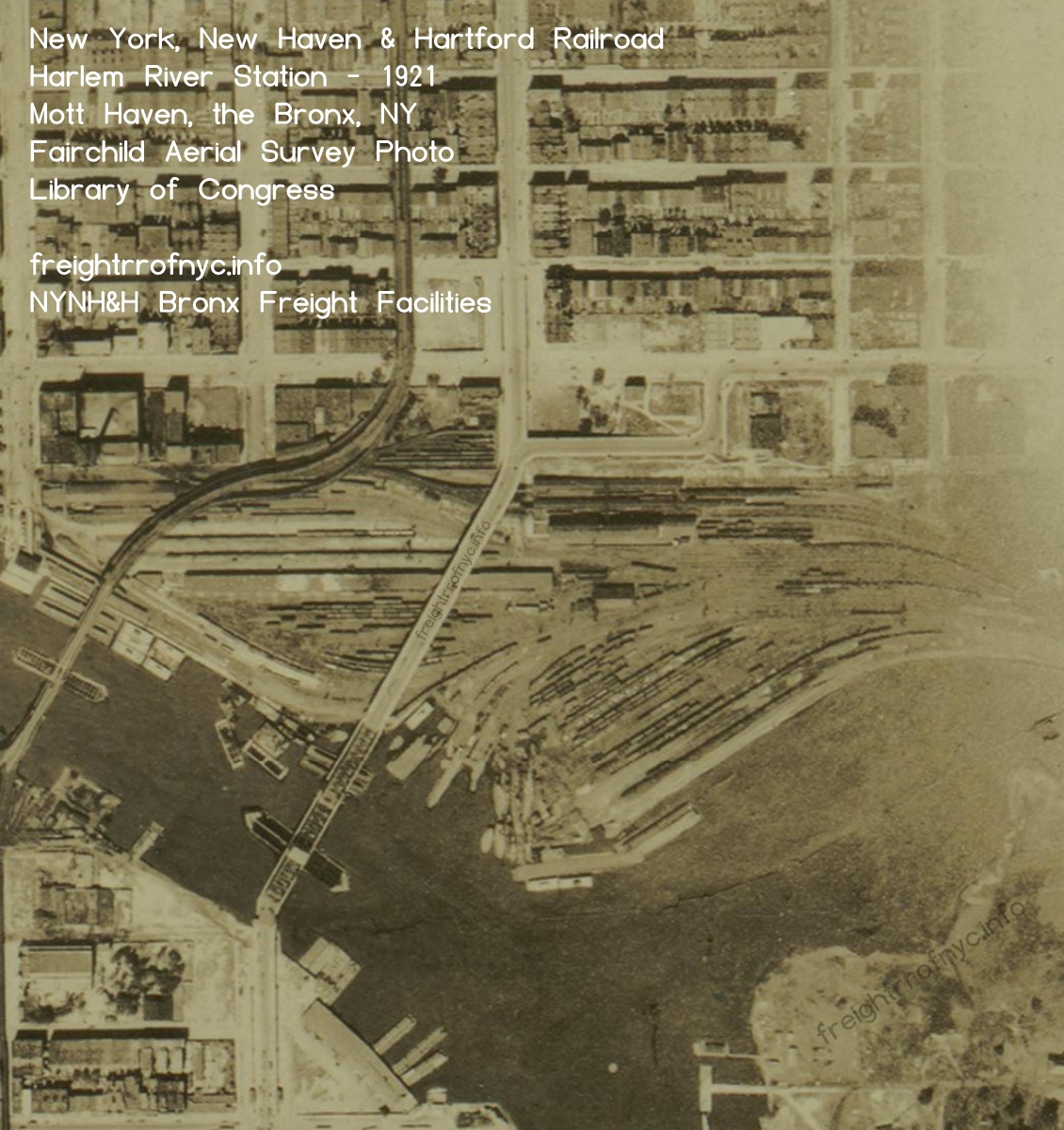
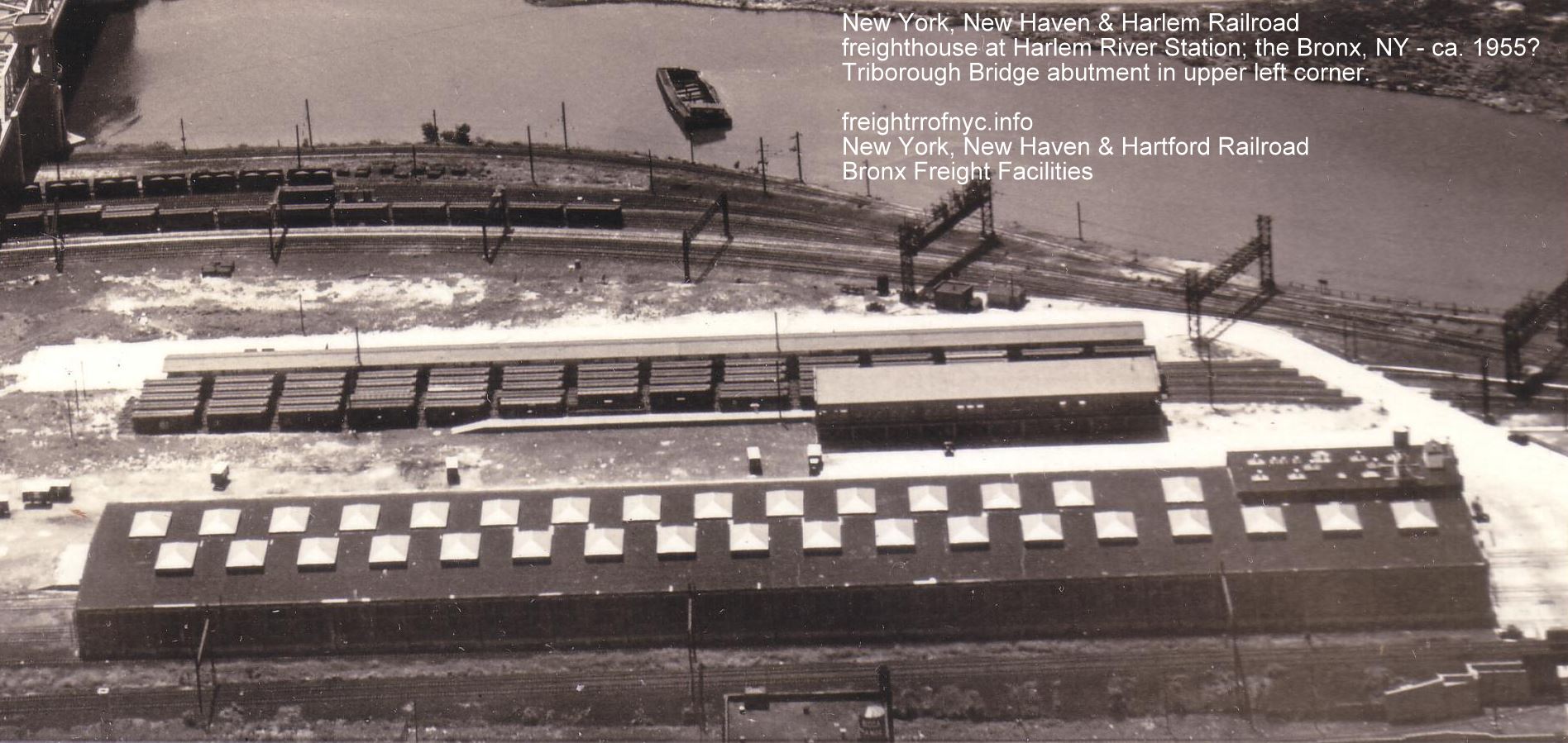
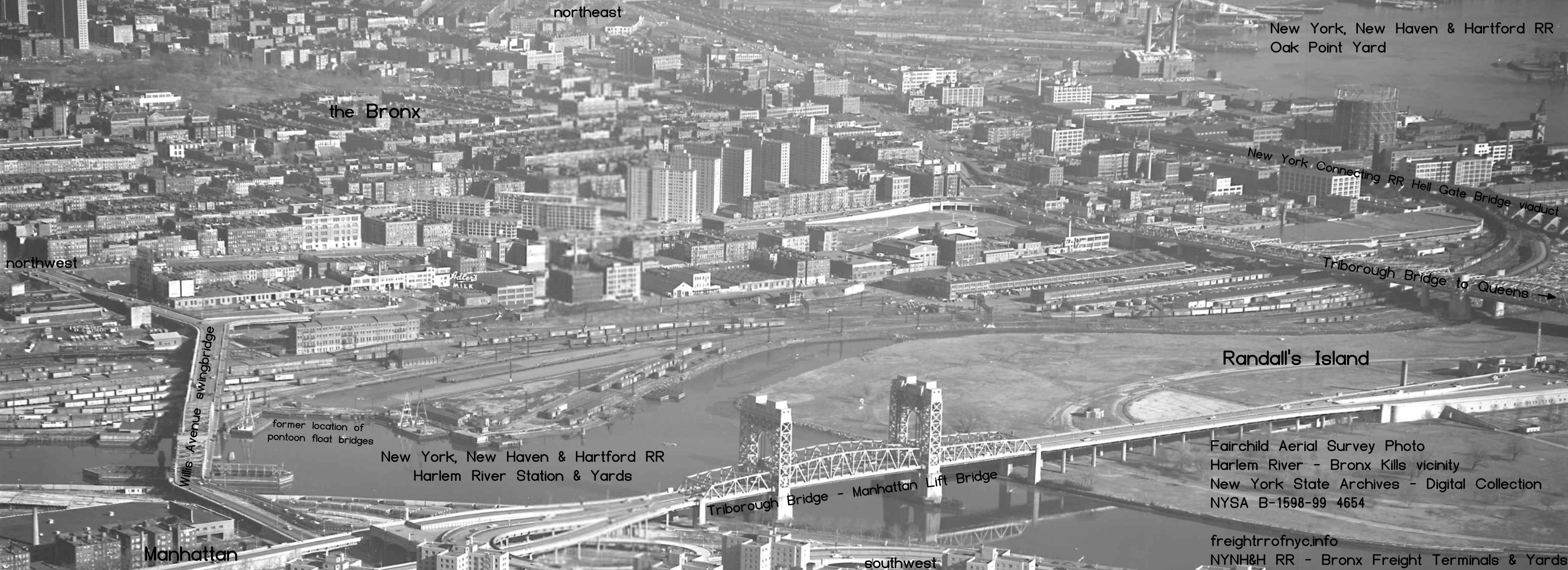

|
THE OAK POINT YARDS OF THE NEW HAVEN ROAD
Some impression of the magnitude of the freight traffic interchanged between the New York New Haven & Hartford and the lines terminating in Jersey City may be conveyed by the statement that in addition to the large yard at the Harlem River terminus of the Harlem River branch of the New Haven Road that company has in operation south of New Rochelle two yards with approximately 15 miles of tracks in each, and this year has finished a third yard with no less than 200 miles of tracks. The one last mentioned, known as the Oak Point Yard, is situated at Casanova Station, on the East River, about 2 miles from the Harlem River. It may be stated here, for the information of those unfamiliar with the layout, that the Grand Central Station and its approaches are used by the New York New Haven & Hartford for passenger business exclusively. All of that company's freight business originating in, destined to or passing through New York is handled over the Harlem River branch, the southern terminus of which is on the north side of the Harlem, just beyond One Hundred and Twenty-ninth street, New York, while the point of junction with the main line is at New Rochelle, 12 miles from Harlem River and 164 miles from the Grand Central Station. The Oak Point Yard is designed primarily as an overflow yard. During the rush of traffic last spring it was brought into use for two or three months, immediately upon its completion. Since that time, business having dropped off, it has remained unoccupied, but available for use whenever needed. No thought of transferring the passenger service carried on by means of the steamer Maryland, which conveys two trains each way daily between the New York New Haven & Hartford and the Pennsylvania, is entertained. In one respect the Harlem River location is preferable, the East River at Oak Point having at flood tide a current of 6 or 8 miles an hour. The East River at this point is open and broad. From the accompanying map, for which the Railway Age is indebted to Mr. C. M. Ingersoll, Jr., Chief Engineer, and Mr. Edward Gagel, Assistant Engineer in charge of the Western district, the arrangement of the yard may be determined at a glance. Mr. W. J. Black, Division Engineer at Harlem River Station, is in immediate charge. The broad space intervening the northern and southern wings of the yard is now occupied by a low hill. This may be removed if occasion shall demand, so that ultimately, if necessary, the entire space may be filled with tracks, thus more than doubling the present extent of the yard. The northern wing will be used chiefly for storage, and, to a less extent, for drilling cars received from Jersey City. The outer half of the south wing will be likewise available. At present trains brought to the Harlem River branch from the east are arranged and classified chiefly at the Van Nest Yard, 2½ miles east of Casanova. Eastbound cars are arranged for divisions or stations partly at Harlem River and partly at Westchester. The expectation is that Oak Point will supplement the two last named in the particulars specified. On the whole, the distinguishing characteristic of the Oak Point arrangement is the number of slip lines introduced. It is said, indeed, that no other yard in the country has so many slips and double slips. The cross-overs just above the bridges are also regarded as an important innovation, particularly by the operating department, inasmuch as by the arrangement here made the transfer floats may be loaded and unloaded simultaneously. In some ways this method is more convenient than at Harlem River. In the construction of the bridges, and the works pertaining to them, some unusual features were introduced necessarily, because of the fact that the foundation close under the inner end is solid rock, while at the outer end the channel of the river is some 50 feet deep and piles had to be driven in rip-rap. With this exception no extraordinary difficulty was encountered in the construction of the yard and its appurtenances. The precise arrangement adopted is due in some measure to the fact that lack of room east of Leggett Avenue compelled the close contraction of the throat of the yard that is indicated in the plan. The Railway Age - Volume 30 August 26, 1900 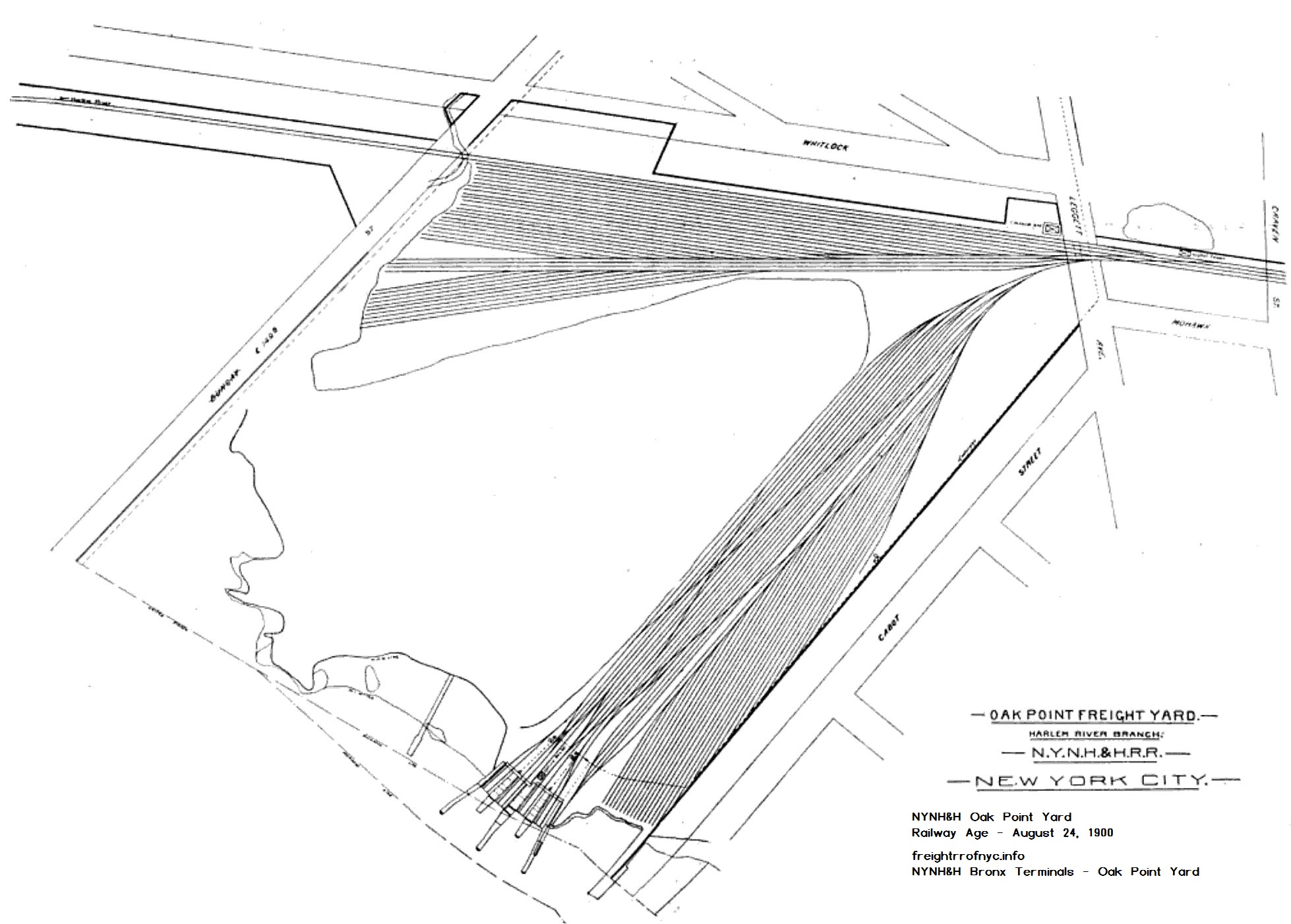 |

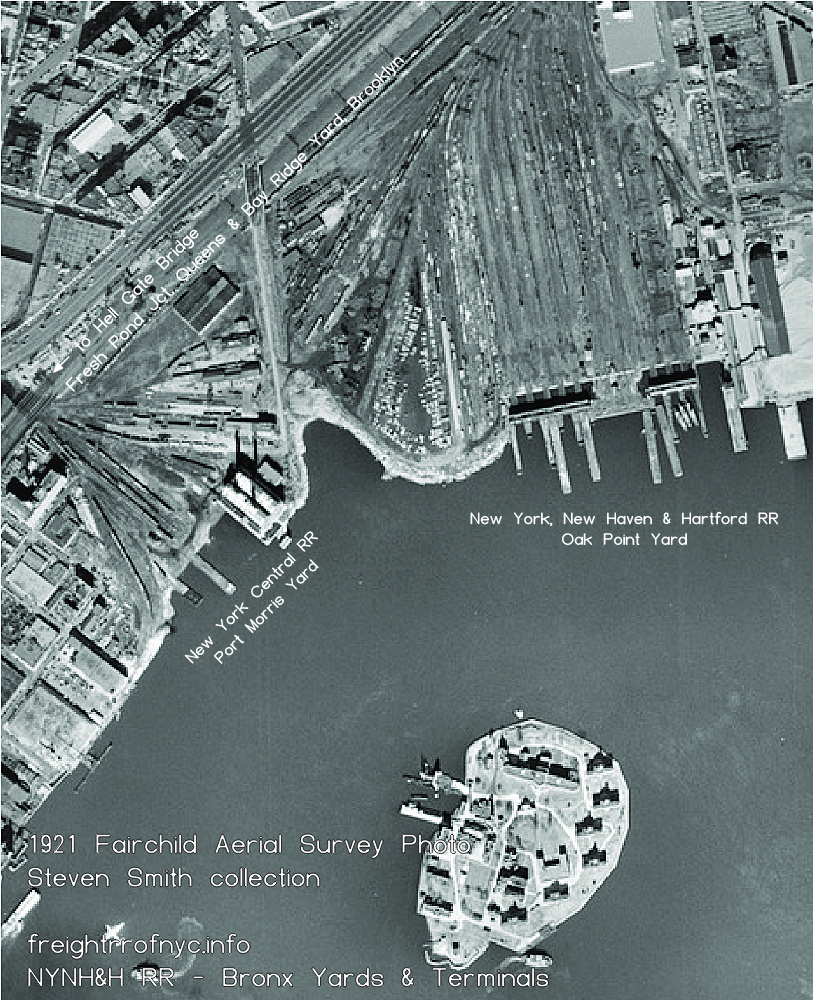

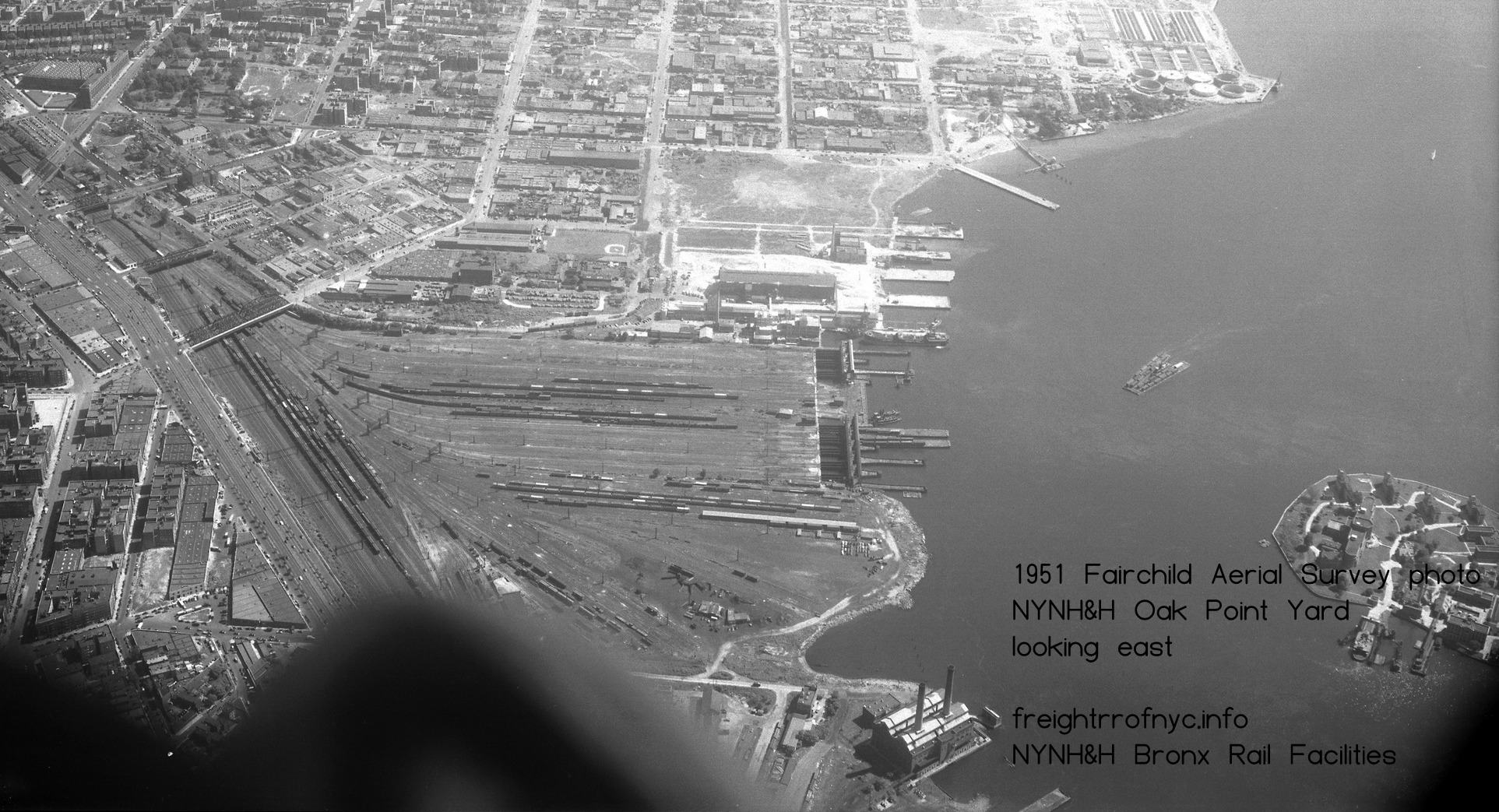
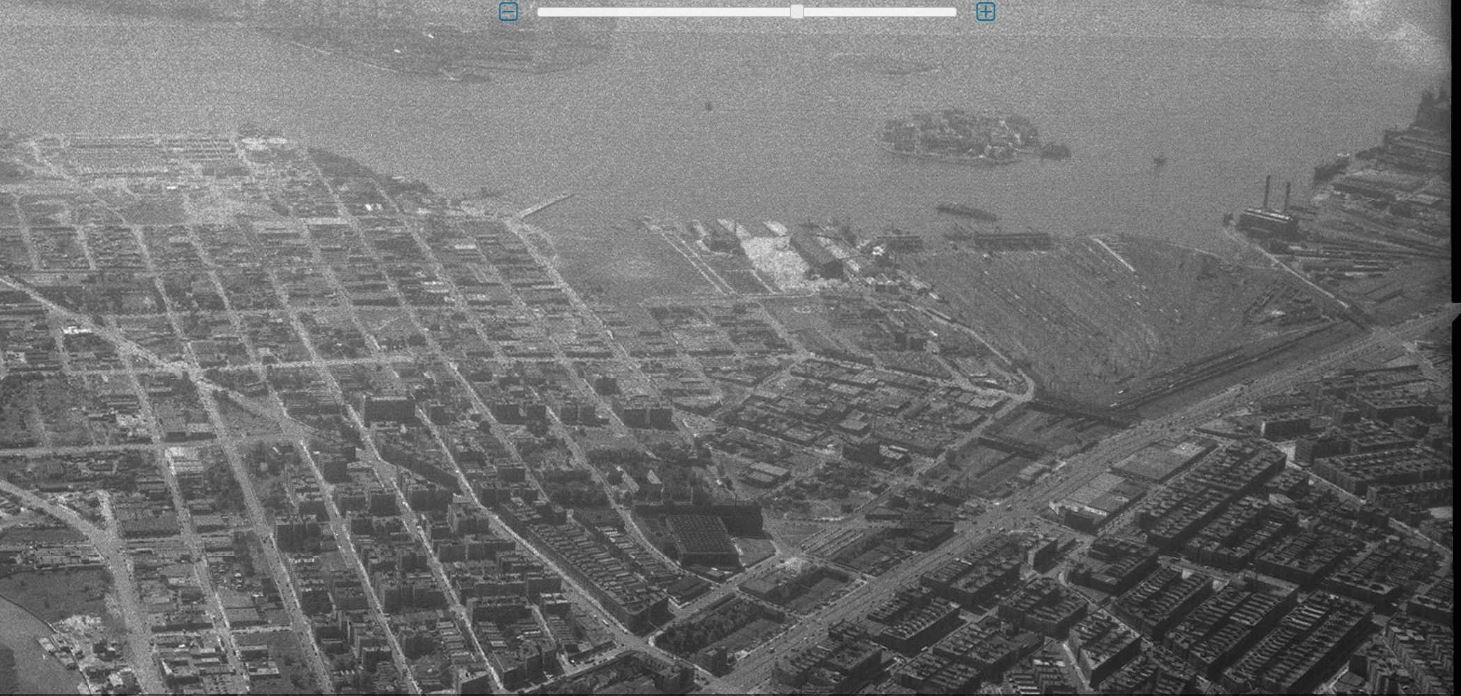
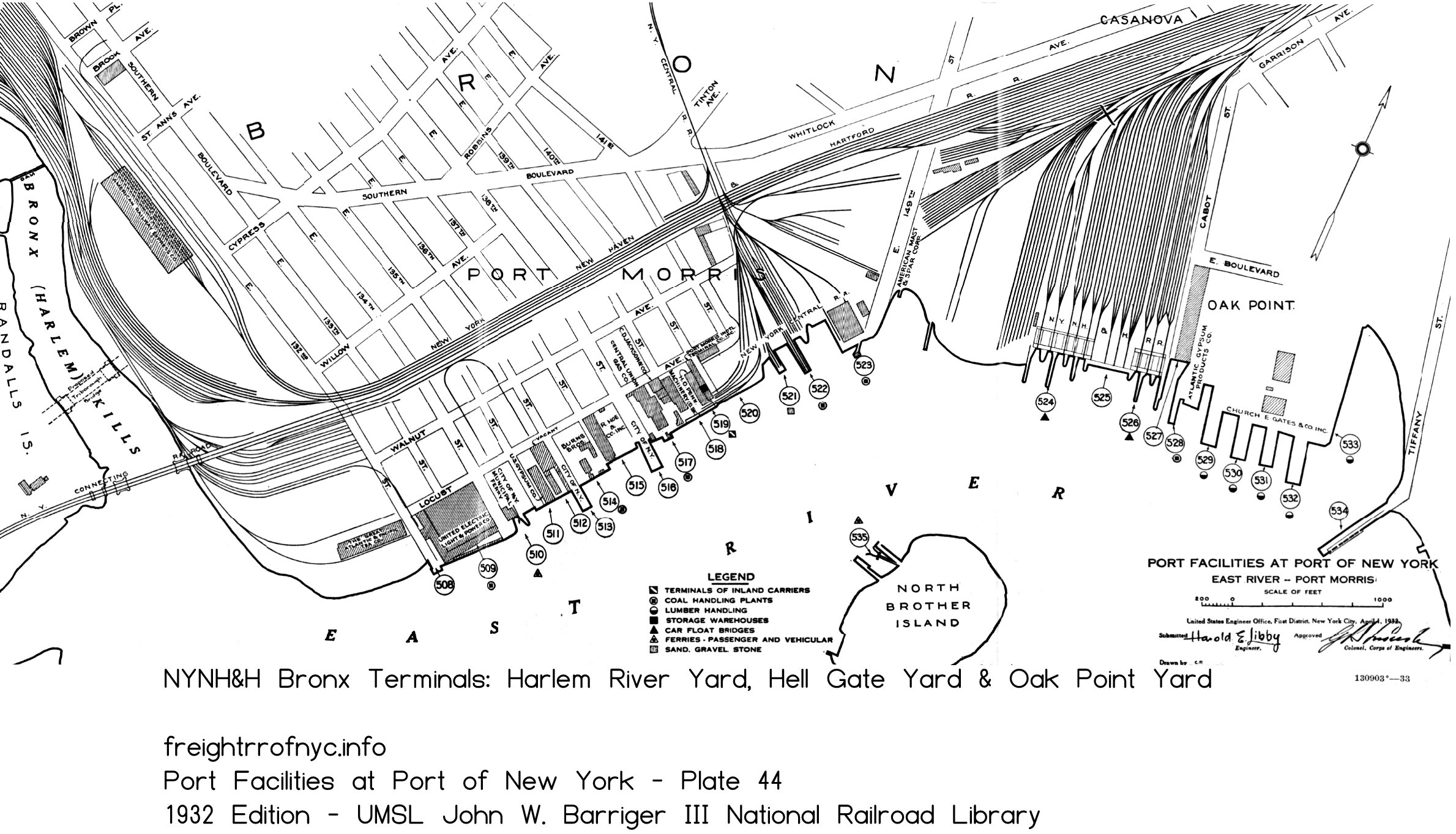



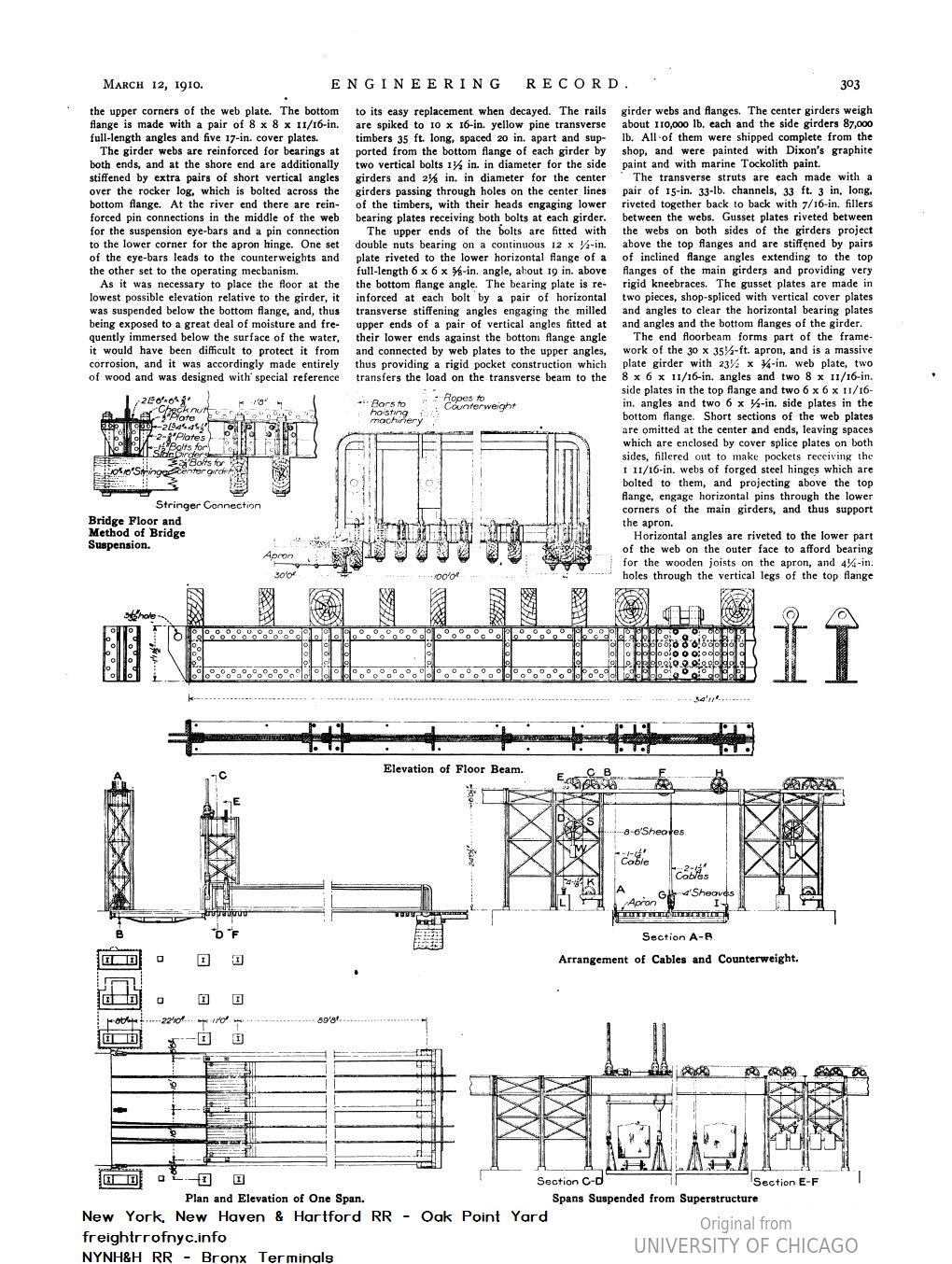
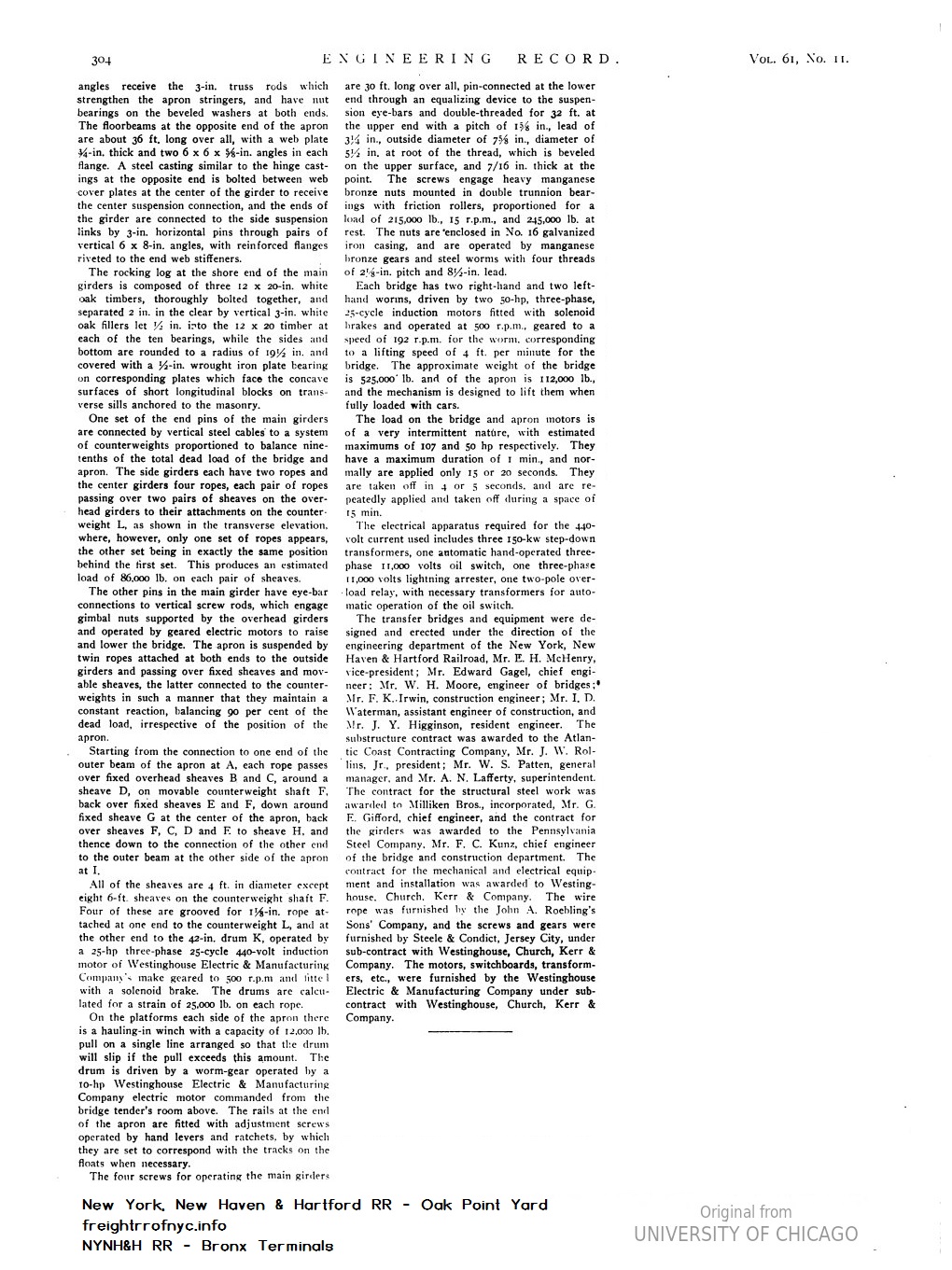
 NYNH&H RR Oak Point Transfer Bridge - unknown date (appears post closure) collection of Paul F. Strubeck added 13 May 2024 |
| . . |
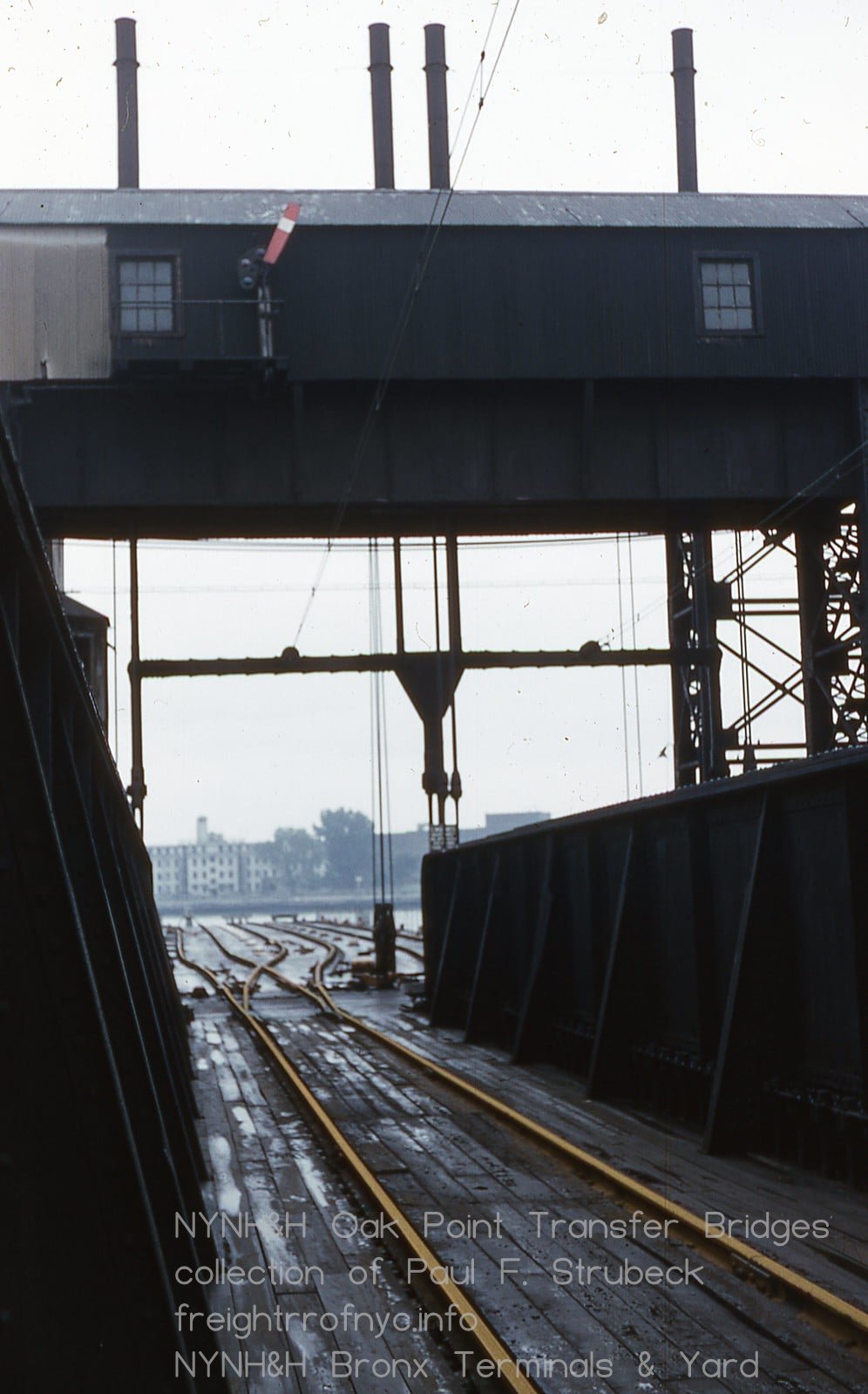 NYNH&H RR Oak Point Transfer Bridge - unknown date (appears post closure) collection of Paul F. Strubeck added 13 May 2024 |
| road number: | builder | c/n | model / style | build date | wheel arrangement | wheel dia | hp rating | NH loco class | disposition | notes |
| 0200 | Baldwin / Westinghouse | 36253 | steeple cab | 9/1911 | B-B | 63" | 480 | EY-2 | weight: 158,000 lbs; tractive effort:33,500 lbs motors: (4) WEM 410; gear ratio: 17/101 |
|
|
|
||||||||||
| 0201 | Baldwin / Westinghouse | 36784 |
steeple cab | 8/1911 | B-B | 63" | 480 | EY-2 | weight: 159,200 lbs tractive effort:38,500 lbs motors: (4) WEM 410; gear ratio: 17/101 |
|
| 0202, 0203 | Baldwin / Westinghouse | 36827, 36828 | steeple cab | 9/1911 | B-B | 63" | 480 | EY-2 | ||
| 0204, 0205 | Baldwin / Westinghouse | 36830, 36831 | steeple cab | 9/1911 | B-B | 63" | 480 | EY-2 | ||
| 0206, 0207 | Baldwin / Westinghouse | 36834, 36835 | steeple cab | 9/1911 | B-B | 63" | 480 | EY-2 | ||
| 0208, 0209 | Baldwin / Westinghouse | 36931, 36832 | steeple cab | 9/1911 | B-B | 63" | 480 | EY-2 | ||
| 0210, 0211 | Baldwin / Westinghouse | 36948, 36849 | steeple cab | 9/1911 | B-B | 63" | 480 | EY-2 | ||
| 0212, 0213, 0214 | Baldwin / Westinghouse | 36988, 36989, 36990 | steeple cab | 9/1911 | B-B | 63" | 480 | EY-2 | ||
|
|
||||||||||
| 0215 | Baldwin / Westinghouse | 37153 | steeple cab | 10/1911 | B-B | 480 | EY-2a | |||
|
|
||||||||||
| 0216 - 0217 | General Electric | 9732 9733 |
box cab | 10/1926 | B+B | 42” | 440 | EY-3 | rebuilt to Diesel Hump Trailer #DT-1 | weight: 196,000 lbs (98 tons) tractive effort: 58,200 lbs GE Class: B+B-196/196-4GE286A order: A-66349 & A-66350 |
|
|
||||||||||
| 0218 | Baldwin / Westinghouse | 59383 | steeple cab | 8/1926 | B-B | 63" | 655 | EY-2b | weight: 181,000 lbs; tractive effort: 45,200 lbs motors: (4) WEM 410; gear ratio: 17/101 |
|
| 0219 | Baldwin / Westinghouse | 59406 | steeple cab | 8/1926 | B-B | 63" | 655 | EY-2b | ||
| 0220 | Baldwin / Westinghouse | 59454 | steeple cab | 8/1926 | B-B | 63" | 655 | EY-2b | ||
| 0221 | Baldwin / Westinghouse | 59456 | steeple cab | 8/1926 | B-B | 63" | 655 | EY-2b | ||
| 0222 | Baldwin / Westinghouse | 59541 | steeple cab | 10/1926 | B-B | 63" | 655 | EY-2b | ||
| 0223 | Baldwin / Westinghouse | 59548 | steeple cab | 10/1926 | B-B | 63" | 655 | EY-2b | ||


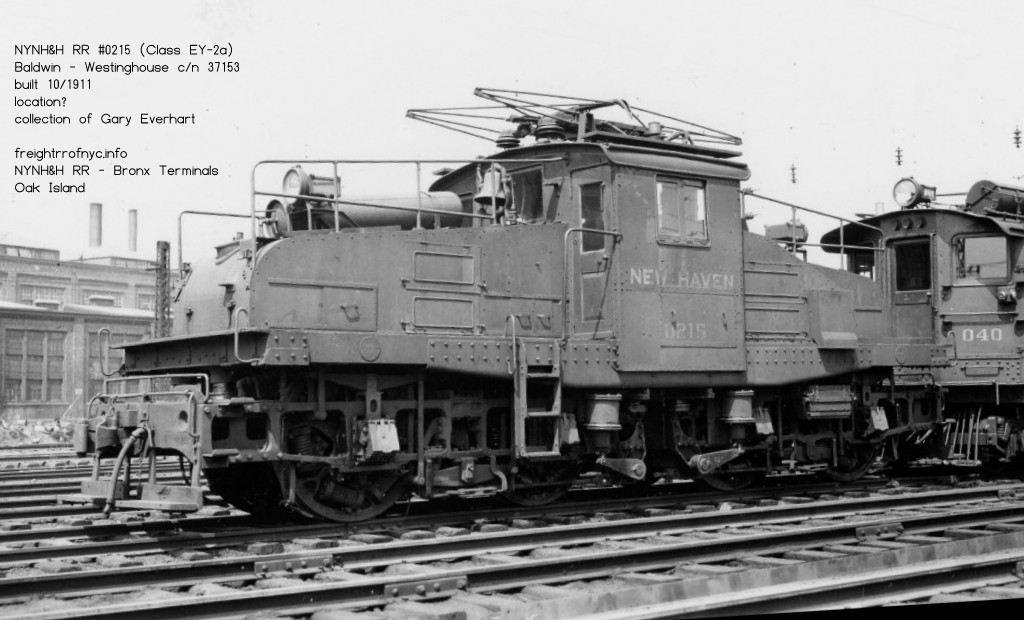
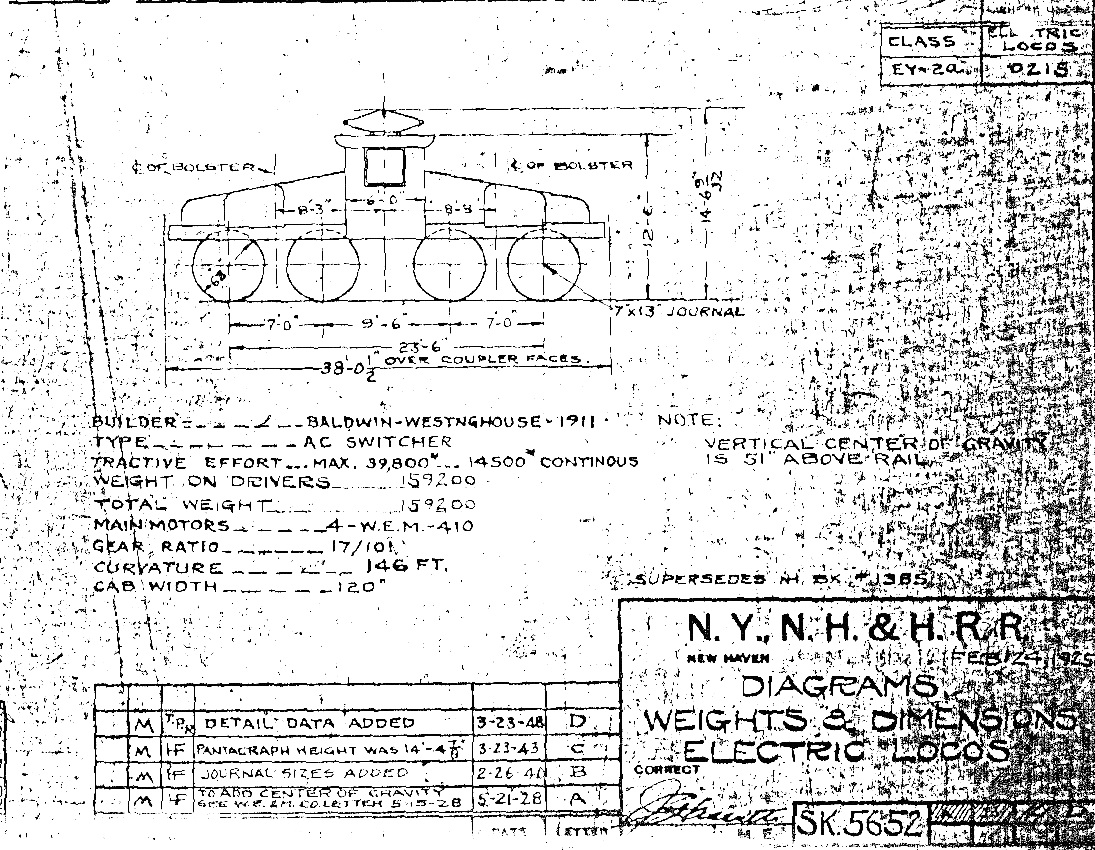
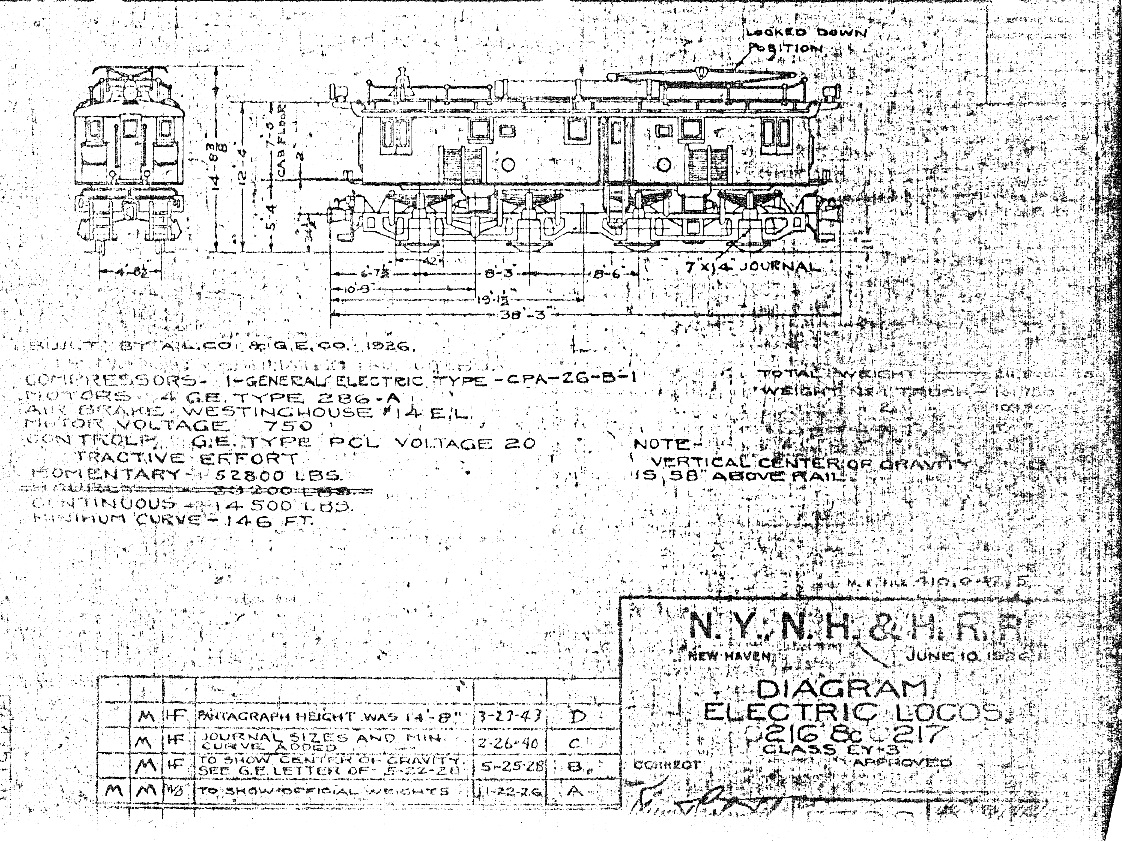
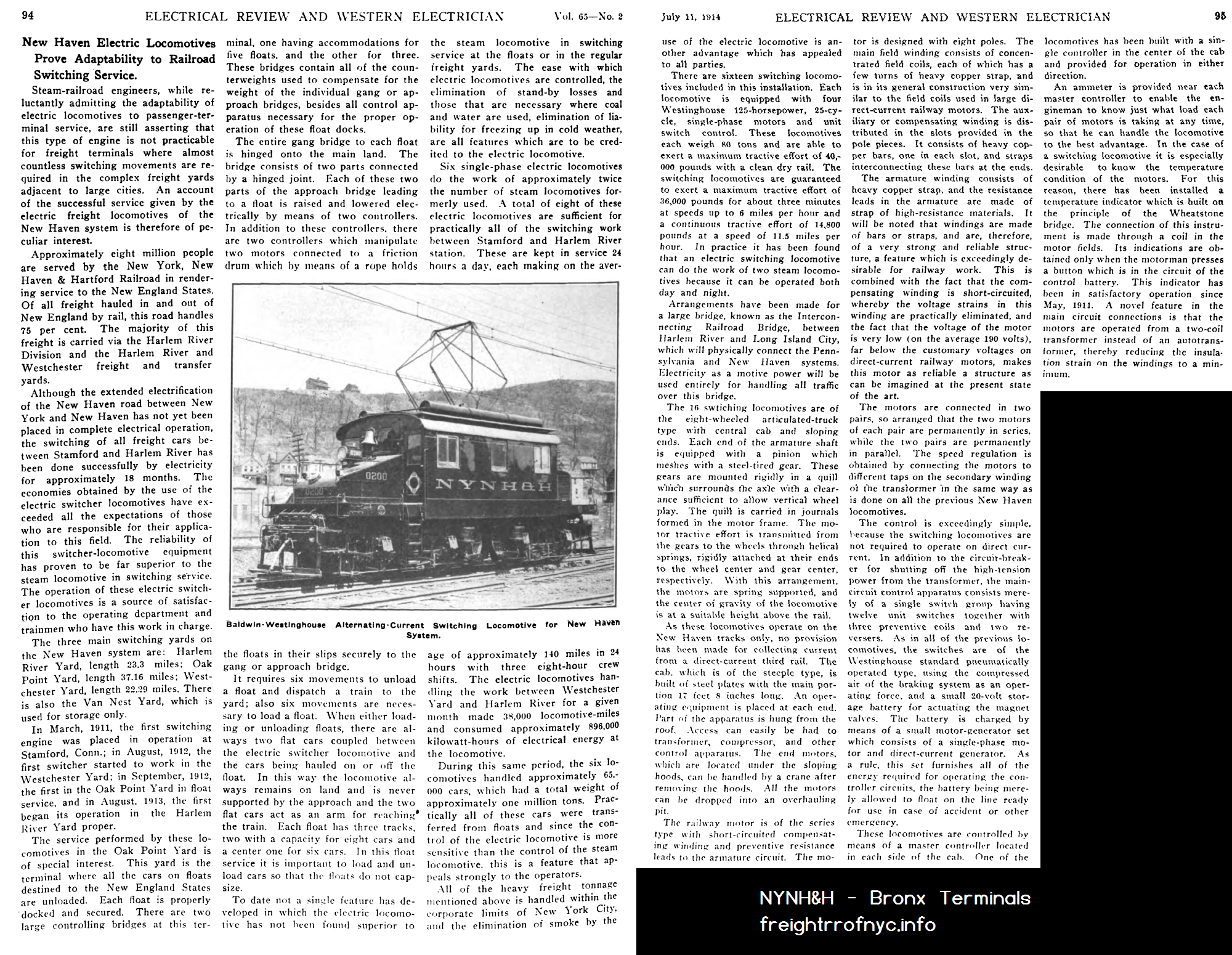
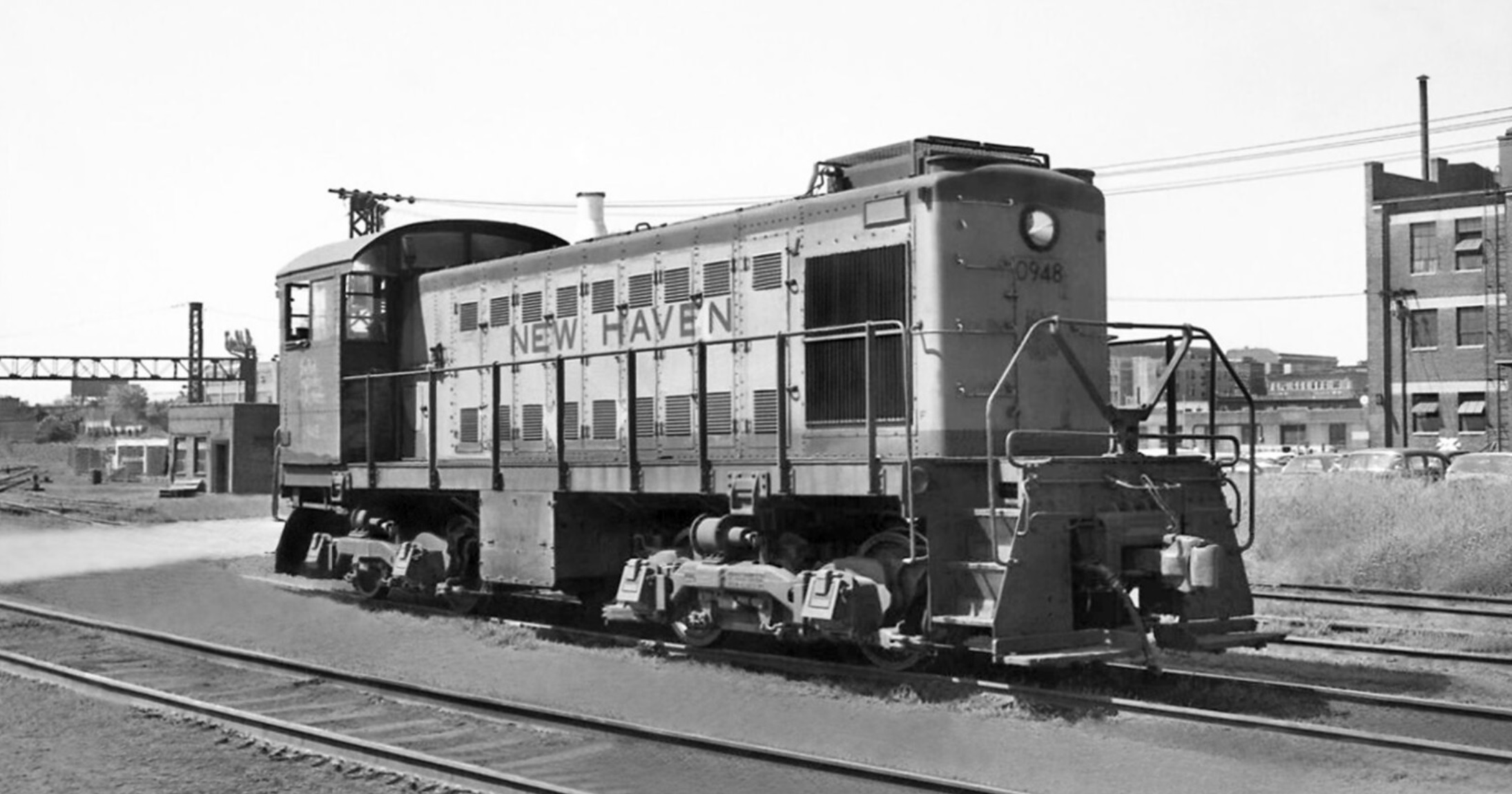
| #0948 | |
| builder: | American Locomotive Co. |
| c/n: | 69859 |
| built: | 1942 |
| ALCo model: | S-1 |
| NH Loco Class: | DEY-3 |
| weight: | 199,000 lbs |
| wheel arrangement: | B-B |
| propulsion: | diesel-electric |
| rating: | 660 hp |
| built for: | New York, New Haven & Hartford |
| to: | Penn Central #4604 [E33] Conrail #4604 [E33] Virginia Museum of Transportation, Roanoke, Va restored and displayed to Virginian #135 |
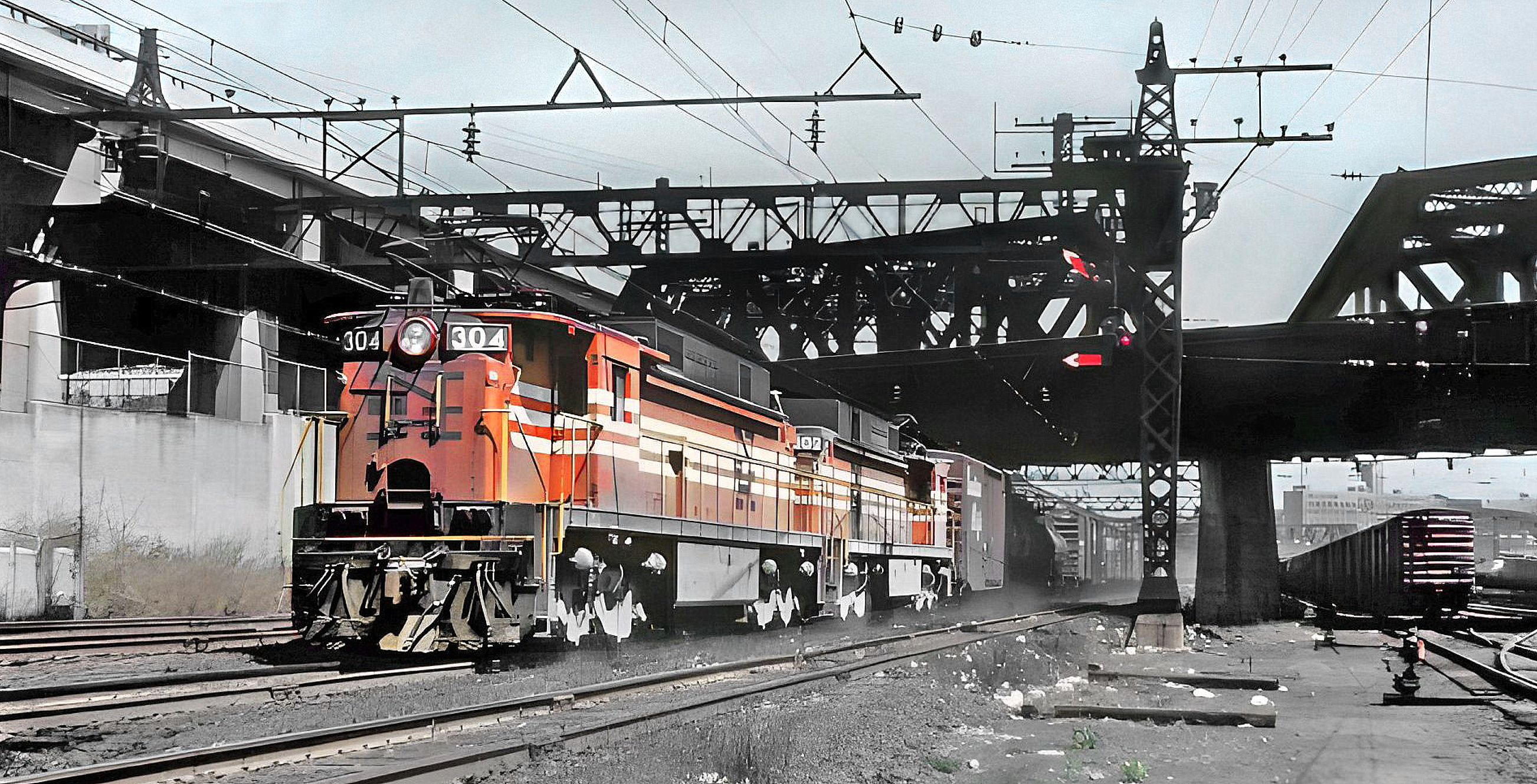
| #304 | #302 | |
| builder: | General Electric | General Electric |
| c/n | 32548 | 32546 |
| ship date: | 11/21/1956 | 11/12/1956 |
| GE Class | C-C-394/394-6GE752 | C-C-394/394-6GE752 |
| NH Loco Class | EL-C | EL-C |
| weight | 197 tons | 197 tons |
| wheel arrangement | C-C | C-C |
| propulsion | electric 11,000v AC 25 hz | electric 11,000v AC 25 hz |
| rating | 3300hp | 300hp |
| built for: | Virginian #135 [EL-C] | Virginian #133 [EL-C] |
| to: | Norfolk &
Western #235 [EL-C] New York, New Haven & Hartford #304 [EF-4] Penn Central #4604 [E33] Conrail #4604 [E33] Virginia Museum of Transportation, Roanoke, Va restored and displayed to Virginian #135 |
Norfolk &
Western #233 [EL-C] New York, New Haven & Hartford #302 [EF-4] Penn Central #4602 [E33] Conrail #4602 [E33] Virginia Museum of Transportation, Roanoke, Va |
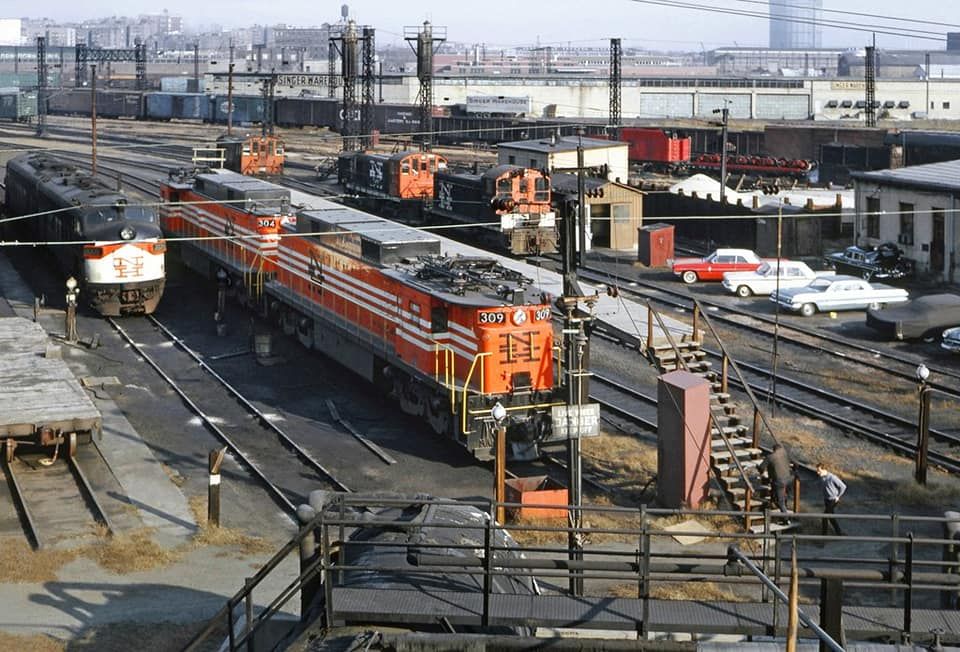
| #309 | #304 | |
| builder: | General Electric | General Electric |
| c/n: | 32553 | 32548 |
| ship date: | 11/12/1956 | 11/21/1956 |
| GE Class: | C-C-394/394-6GE752 | C-C-394/394-6GE752 |
| NH Loco Class: | EL-C | EL-C |
| weight: | 197 tons | 197 tons |
| wheel arrangement: | C-C | C-C |
| propulsion: | overhead electric catenary 11,000v AC 25 hz | overhead electric catenary 11,000v AC 25 hz |
| rating: | 3300hp | 3300hp |
| built for: | Virginian #140 [EL-C] | Virginian #135 [EL-C] |
| to:: | Norfolk &
Western #240 [EL-C] New York, New Haven & Hartford #309 [EF-4] Penn Central #4609 [E33] Conrail #4609 [E33] Virginia Museum of Transportation, Roanoke, Va |
Norfolk &
Western #235 [EL-C] New York, New Haven & Hartford #304 [EF-4] Penn Central #4604 [E33] Conrail #4604 [E33] Virginia Museum of Transportation, Roanoke, Va restored and displayed to Virginian #135 |
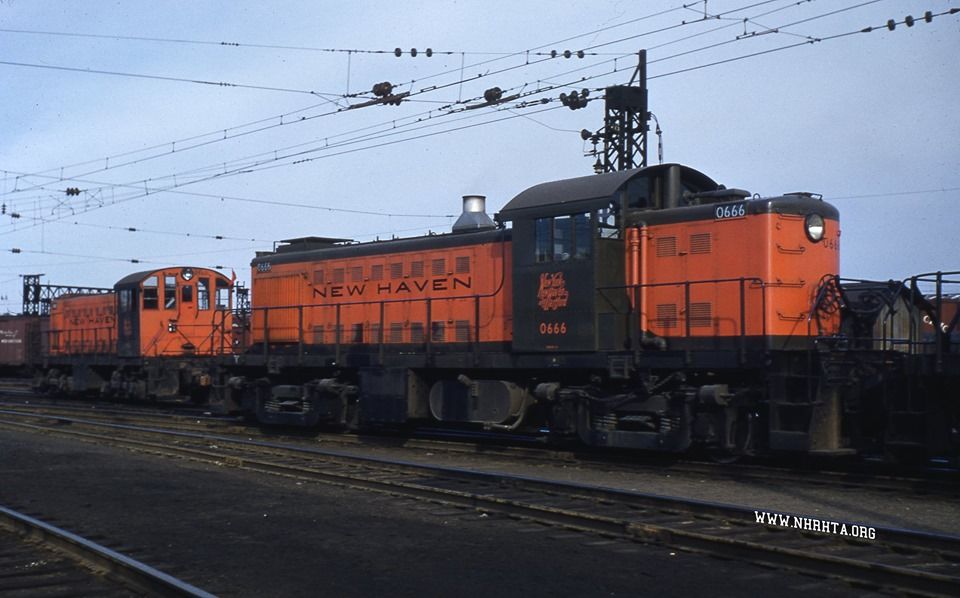
| #0666 | #0960 | |
| builder: | American Locomotive Co. | American Locomotive Co. |
| c/n: | 75835 | 69859 |
| built: | 1948 | 1948 |
| ALCo model: | RS-1 |
S-1 |
| NH Loco Class: | DERS-1b | DEY-3 |
| weight: | 247,500 lbs | 199,000 lbs |
| wheel arrangement: | B-B | B-B |
| propulsion: | diesel-electric | diesel-electric |
| rating: | 1000 hp | 660 hp |
| built for: | New York, New Haven & Hartford | New York, New Haven & Hartford |
| disposition: | scrapped | unknown |
.
Steam Powered Tug Roster
|
date built |
builder / |
official number/ |
length |
beam |
draft |
|
gross |
net |
former owner |
|
|
|
"Transfer 2" |
|||||||||||
| 1880 | Philadephia, PA | 145218 | 92.3 | 21 | 8.8 | 350 | 101 | 50 | steam | crew: 11 | |
|
.
. |
|||||||||||
|
"Transfer 3" |
|||||||||||
| 1880 | Philadephia, PA | 145426 | 92.7 | 22 | 10 | 500 | 130 | 65 | steam | crew: 11 | |
|
.
. |
|||||||||||
|
"Transfer 5" |
|||||||||||
| 1888 | Wilmington, DE | 145475 | 91 | 20 | 9.5 | 600 | 142 | 71 | steam | crew: 13 | |
|
.
. |
|||||||||||
|
"Transfer 6" |
|||||||||||
| 1888 | Wilmington, DE | 145476 | 91 | 20 | 9.5 | 600 | 142 | 71 | steam | crew: 13 | |
|
.
. |
|||||||||||
|
"Transfer 7" |
|||||||||||
| 1891 | Elizabeth, NJ | 145581 | 90.1 | 22.2 | 10.5 | 600 | 129 | 64 | steam | crew: 13 | |
|
.
. |
|||||||||||
|
"Transfer 8" |
|||||||||||
| 1891 | Elizabeth, NJ | 145585 | 90.1 | 22.2 | 10.5 | 600 | 131 | 65 | steam | iron hull, crew: 13 | |
|
.
. |
|||||||||||
|
"Transfer 9" |
|||||||||||
| 1891 | Elizabeth, NJ | 145587 | 101.7 | 29 | 10.9 | 600 | 196 | 98 | steam | crew: 13 | |
|
.
. |
|||||||||||
|
"Transfer 10" |
|||||||||||
| 1889 | Wilmington, DE | 130444 | 114 | 23.6 | 11.6 | 600 | 217 | 108 | steam | crew: 13 | |
|
.
. |
|||||||||||
|
"Transfer 11" |
|||||||||||
| 1898 | Wilmington, DE | 145764 | 110 | 25 | 14 | 750 | 248 | 109 | steam | crew: 13; oil fired | |
|
.
. |
|||||||||||
|
"Transfer 12" |
|||||||||||
| 1898 | Wilmington, DE | 145770 | 110 | 25 | 14 | 750 | 249 | 110 | steam | crew: 13 | |
|
.
. |
|||||||||||
|
"Transfer 14" |
|||||||||||
| 1900 | Bath, ME | 145839 | 119.9 | 26.1 | 15.8 | 1500 | 322 | 189 | steam | crew: 13 | |
|
.
. |
|||||||||||
|
"Transfer 15" |
|||||||||||
| 1900 | Bath, ME | 145827 | 119.9 | 26.1 | 15.8 | 1500 | 322 | 189 | steam | crew: 16 | |
|
.
. |
|||||||||||
|
"Transfer 16" |
|||||||||||
| 1904 | Philadelphia, PA | 200761 | 112 | 26.2 | 14 | 1000 | 268 | 182 | steam | crew: 13; oil fired | |
|
.
. |
|||||||||||
|
"Transfer 17" |
|||||||||||
| 1904 | Philadelphia, PA | 200299 | 112 | 26.2 | 14 | 1000 | 268 | 182 | steam | crew: 13 | |
|
.
. |
|||||||||||
|
"Transfer 18" |
|||||||||||
| 1904 | Philadelphia, PA | 200844 | 112 | 26.2 | 14 | 1000 | 268 | 182 | steam | crew: 7; oil fired | |
|
.
. |
|||||||||||
|
"Transfer 19" |
|||||||||||
| 1905 | Philadelphia, PA | 202631 | 112 | 26.2 | 14 | 1000 | 270 | 183 | steam | crew: 5 oil fired |
|
|
.
. |
|||||||||||
|
"Transfer 20" |
|||||||||||
| 1905 | Philadelphia, PA | 202634 | 112 | 26.2 | 14 | 1000 | 270 | 183 | steam | crew: 5 | |
|
.
. |
|||||||||||
|
"Transfer 21" |
|||||||||||
| 1908 | Quincy, MA | 204859 | 110.9 | 27.9 | 13.5 | 1000 | 267 | 155 | steam | oil fired | |
Diesel Powered Tug Roster:
It should be noted that the NYNH&H Railroad chartered several tugboats owned by Dalzell Towing.
For specifications on these vessels, please refer to Diesel Railroad
Tugboats, Volume 1 - East Coast; by Paul F. Strubeck.
|
date built |
builder / |
official number/ |
length |
beam |
draft |
|
gross |
net |
former owner |
|
|
|
"Cordelia" / "Transfer 23" |
|||||||||||
| 1952 | Jakobson Shipyard Oyster Bay, NY |
266145 / 344 | 106' | 27' | 12' | 1350 | 262 | 178 | Cleveland 16-278A diesel-electric |
renamed "Transfer 23" transferred 1969 to Penn Central sold to 1972 to Brooklyn Eastern District Terminal renamed "Petro Arrow" renamed 1978 "Williamsburgh" renamed 1979 the "Brooklyn III" (had a canvas canopy over boat deck) not to be confused with New York Dock "Brooklyn III" sold 1983 to New York Cross Harbor main engine failure in the early 1990s [4] scrapped 1996 |
|
| . |
|||||||||||
|
.
. |
|||||||||||
|
"Bumble Bee" / "Transfer 24" |
|||||||||||
| 1952 | Jakobson Shipyard Oyster Bay, NY |
265688 / 345 | 106' | 27' | 12' | 1350 | 262 | 178 | Cleveland 16-278A diesel-electric |
renamed "Transfer 24" transferred 1969 to Penn Central sold 1972 to Brooklyn Eastern District Terminal renamed "Petro Flame" renamed 1978? "Greenpoint" renamed 1979 "New Jersey" sold 1983 to New York Cross Harbor, renamed 1985 "Cross Harbor I" out of service late 1980s due to main generator failure sold 1998 to Eastern Towboat in Boston, MA. sold 2007 to Yacht Club in Melville, RI, partially sunk |
|
 "Bumble Bee" - 1952 Publicity Photo - Cleveland Diesel Engine Division of GM collection of Paul F. Strubeck added 13 May 2024 |
 "Cordelia" - 1952 Advertisement - Cleveland Diesel Engine Division of GM collection of Paul F. Strubeck added 13 May 2024 |
| . . |
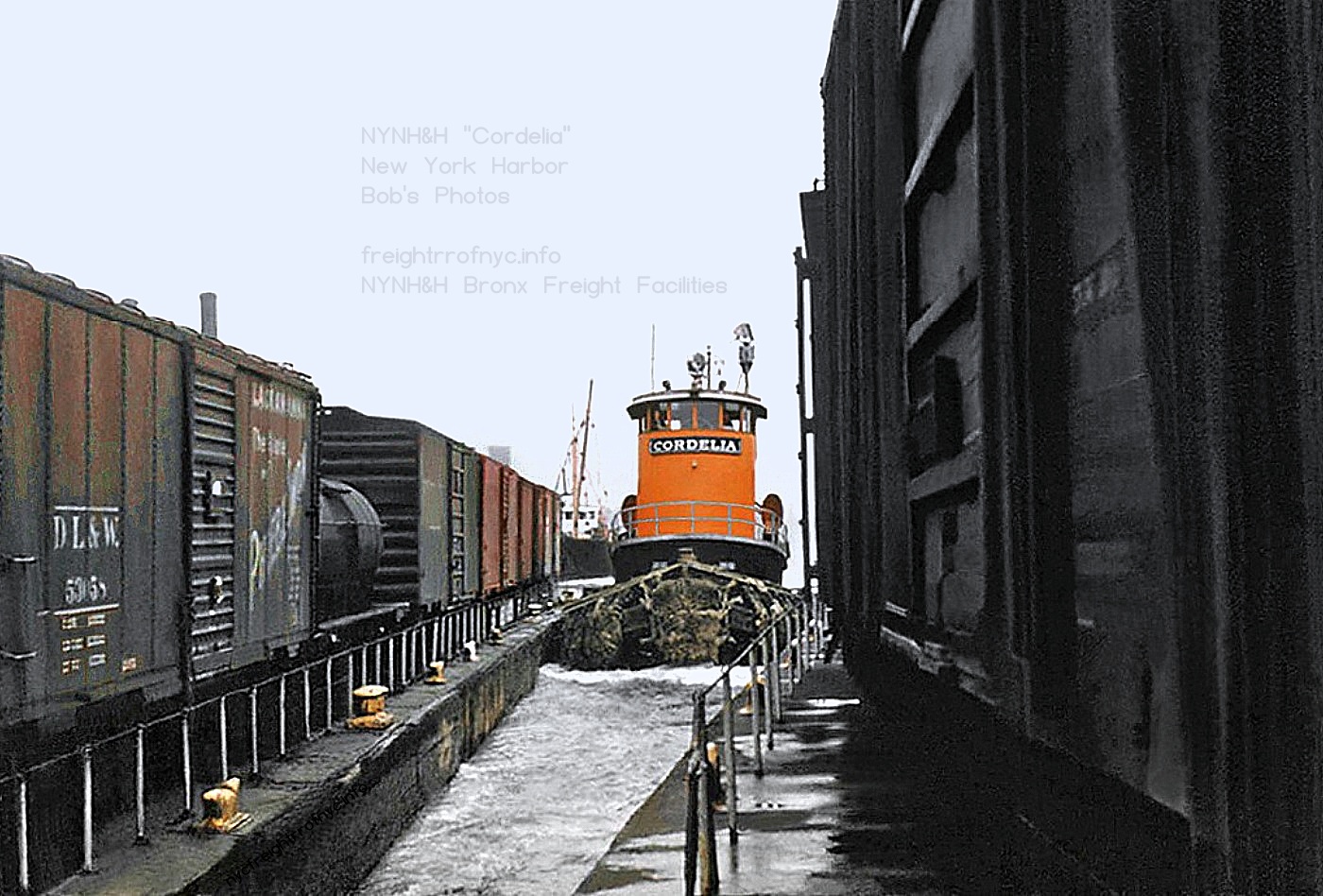 "Cordelia" - unknown date Bob's Photos added 13 May 2024 |
| . . |
 "Bumble Bee"? - unknown date southwestbound to New Jersey in front of Stature of Liberty. photographer unknown collection of Paul F. Strubeck added 13 May 2024 |
| . . |
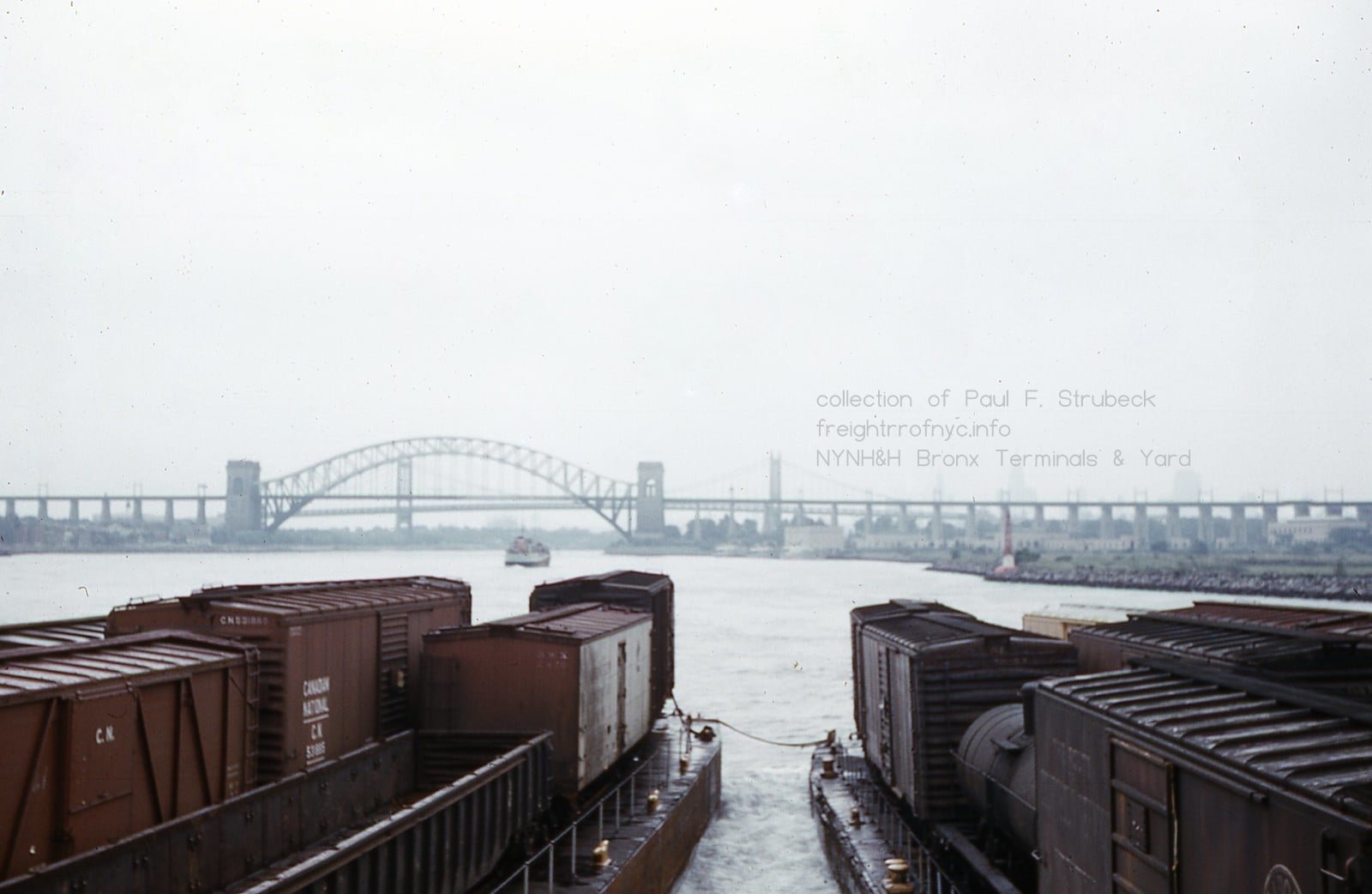 unknown tug - unknown date departing Oak Point, the Bronx; southbound on East River approaching Hell Gate Bridge. photographer unknown collection of Paul F. Strubeck added 13 May 2024 |
| . . |
 unknown tug - unknown date departing Oak Point, the Bronx; southbound on East River approaching Hell Gate Bridge. photographer unknown collection of Paul F. Strubeck added 13 May 2024 |
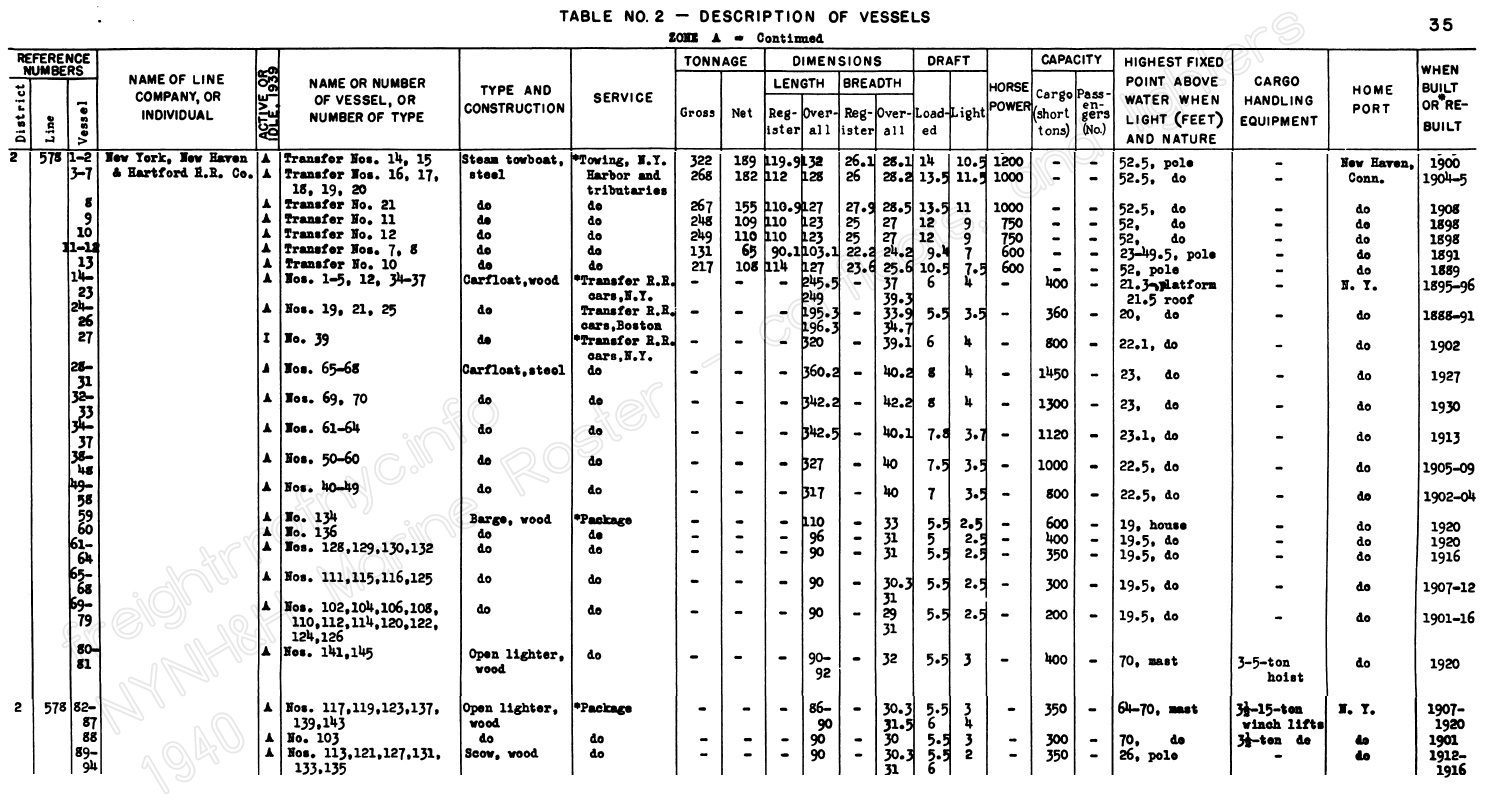
Like what you see? Suggestions?
Comments?